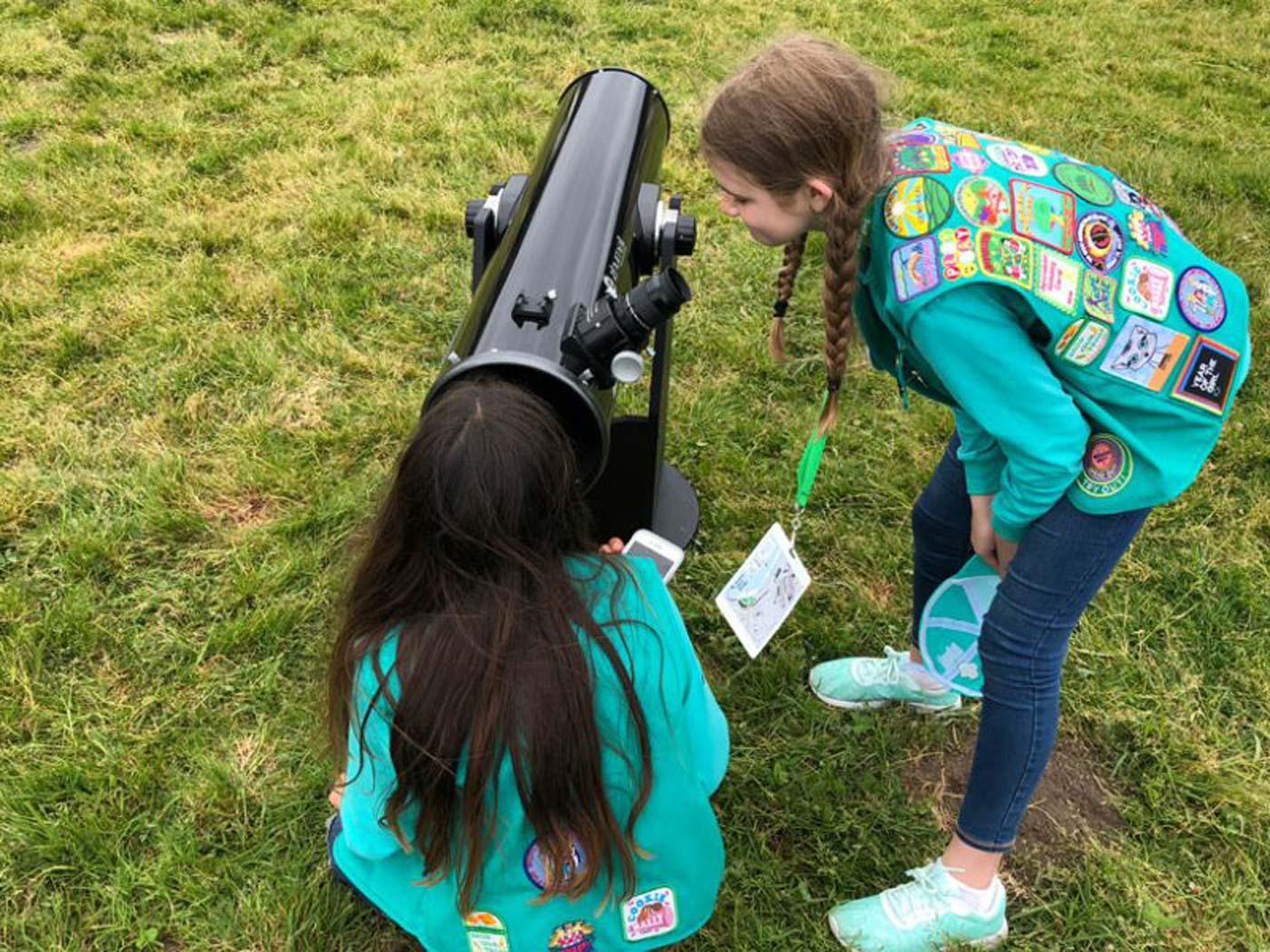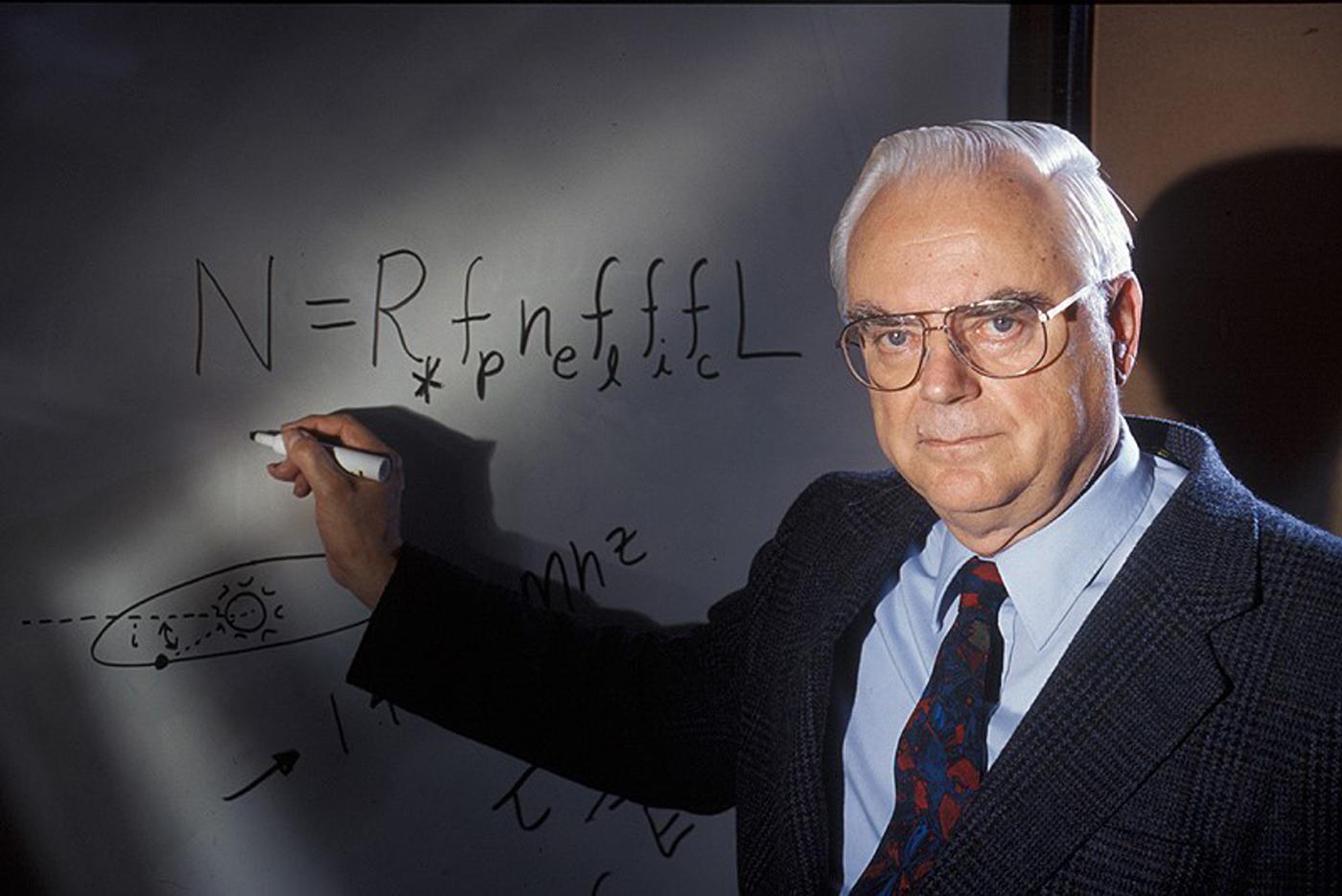
The Girl Scouts of the United States of America recently unveiled badges encouraging girls from kindergarten through 5th grade to explore space sciences. The initiative, called “Reaching for the Stars”, is led by the SETI Institute’s acting director of the Center for Education, Pamela Harman, in partnership with NASA, the Girl Scouts of the United States of America, the Astronomical Society of the Pacific, and others. Eos spoke to Harman about the importance of the badges for getting girls interested in the sciences:
The reasoning behind the badges is simple: Space science needs girls, explained Pamela Harman, acting director for the center for education at SETI Institute. “We want them to be interested [in space science]. We want them to know that it’s exciting and collaborative,” she told Eos.
In order to inspire girls to step up as leaders, scouts are encouraged to share what they learn with other girls by helping younger scouts or presenting space-themed art. Badges also come with training materials and guides tailored to be age-appropriate, educational, and engaging. More than 2,800 girl scouts started working towards their badges in the first month of the program according to Harman, which is part of a larger Girl Scouts initiative seeking to get girls engaged in science, technology, engineering and mathematics (STEM):
“In this past summer, the Girl Scouts released cybersecurity badges, mechanical engineering badges, robotics badges, and, of course, the three space science badges,” Harman said. “I’m so pleased and proud that the Girl Scouts are really working on STEM opportunities for girls.”
You can read more about the SETI Institute’s education and outreach work on our website, SETI.org.
- Eos: Girl Scouts Can Now Earn Space Science Badges
- SETI.org: Girl Scout Stars
- SETI.org: Fostering Leadership and Teaching STEM Skills at Girl Scouts Camp
 Galactic Family Tree? Seth Shostak on the Panspermia Hypothesis
Galactic Family Tree? Seth Shostak on the Panspermia HypothesisSeth Shostak, Senior Astronomer at the SETI Institute, explored a tantalizing hypothesis about the origin of life. In an article for NBC News MACH, Shostak unpacked the concept of panspermia:
Here’s the basic idea: A meteor slams into a planet where life exists, and the collision lofts into space a microbe-containing dirt clod. The clod eventually slams into another world and infects it with life.
Scientists have long felt that panspermia, although yet unproven, is possible but likely limited to within our Solar System. Since the discovery of ‘Oumuamua - the interstellar object found as it cruised through our Solar System last year - researchers at Harvard University argued in a new paper that it’s possible for life to seed itself across far greater distances, even across galaxies. But what does it mean for us so-called Earthlings?
If this scenario is right, that report you got from Ancestry.com or 23andMe could be incomplete. Instead of being Bosnian or Bengali, your real ancestry might trace back to an as-yet-undiscovered planet. It would also imply that life is ubiquitous.
Not all researchers are convinced that even the hardiest bacterium could survive the harsh cosmic radiation to become a progenitor on a distant world, but Shostak finds such objections haven’t dampened the idea’s appeal, saying, “If we’re not descended from the gods, at least we might be descended from ancestors on a planet far, far away.”
- NBC News MACH: Comets and asteroids may be spreading life across the galaxy
- ArXive: Galactic Panspermia
 Frank Drake: SETI Regains its “Swagger”
Frank Drake: SETI Regains its “Swagger”An article for the Good Times of Santa Cruz featured a story about Frank Drake, a local whose contributions to science and the field of SETI are renowned. Drake is Chairman Emeritus of SETI Institute's Board of Trustees and the former Director of what is now known as the Carl Sagan Center for the Study of Life in the Universe at the SETI Institute, and who created the eponymous Drake Equation that effectively launched the field into the modern world. Good Times spoke to Andrew Siemion, who holds the Bernard M. Oliver Chair for SETI Research at the SETI Institute, about Drake’s contributions to the scientific search for life beyond Earth:
“Frank turned [it] into a science,” says astrophysicist Andrew Siemion, the director of the Berkeley SETI Research Center. “He took something that was at the time philosophically important—almost a religious question—and brought it into the realm of modern scientific inquiry.”
“…It’s impossible to overstate Frank’s importance to the field on so many levels,” he says. “He was the general in the battle to create the field, and he was the statesman that allowed it to flourish.”
After a long career in the field, Drake is determined to continue the search:
Drake says he’s an optimist, that in 10 to 20 years, given the vast space the new instruments will be covering, we may have some evidence of another technological civilization, even if it’s a long-extinct one.
“Mathematically, there has to be,” he says. “To say the universe is an empty void is not only presumptuous, but stupid. I think there may be an earlier discovery, that we’ll find [primitive] life elsewhere in the solar system. That will make concrete that the origins of life are common.”
As for SETI, says Drake: “It’s a lottery. The chance of winning is still very remote. But we’re buying a whole lot of tickets.”
- Good Times: How A Santa Cruz County Scientist Revived the Search for Alien Life
- SETI.org: Frank Drake
In last week’s episode, the team eavesdrops on some non-human communication in You’ve Got Whale. On our previous week’s episode, experience the draw and the dangers of GPS in an encore presentation of Rerouting... Rerouting.
Last week, Facebook Live featured not one but TWO episodes! Commemorating the epic voyage of Kepler as it reached the end of its mission, SETI Institute President and CEO Bill Diamond spoke with scientists Jeff Smith and Franck Marchis. The following episode focused on the Airborne Astronomy Ambassadors Program, with Acting Director of Education Pamela Harman and CEO Bill Diamond. Videos of all past Facebook Live events can be found on our Facebook page: https://www.facebook.com/SETIInstitute/
- Earth Impacting Debris from Comets and Asteroids: November 9, Los Angeles, CA Talk presented by SETI Institute scientist Peter Jenniskens at UCLA
- World Premiere – The Sound of Silence: November 10, Brooklyn, NY Concert featuring new work composed by SETI Artist-in-Residence Felipe Pérez Santiago and inspired by the work of Jill Tarter, Chair Emeritus for SETI at the SETI Institute
- Cassini’s Spectacular Final Year at Saturn: November 13, Palo Alto, CA SETI Institute Senior Research Scientist Matthew Tiscareno will present
- SETI Talks a Tribute to Kepler: November 13, Menlo Park, CA Natalie Batalha, former project scientist for NASA’s Kepler Mission, and Doug Caldwell, senior research scientist at the SETI Institute will discuss the state of the search for exoplanets
- Lunar Exploration and Analysis Group Annual Meeting: November 14-15, Columbia MD Margaret Race, Senior Research Scientist at the SETI Institute will speak
- Science Film Festival – Contact: November 18, Berkeley, CA A screening of the film Contact with introduction by Jill Tarter, SETI Institute co-founder and inspiration for the character of Ellie Arroway in the film
- NewSpace Europe: Breaking Barriers: November 27-28, Luxembourg City, Luxembourg The SETI Institute is a sponsor of this event.





